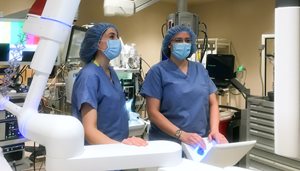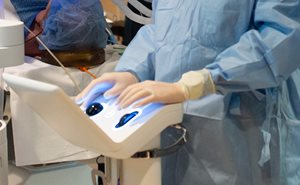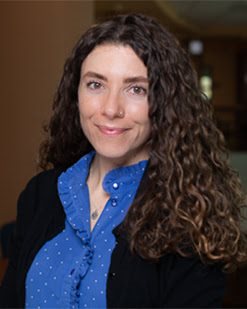 Lung cancer continues to be the leading cause of cancer-related death in men and women. When caught early, lung cancer is very treatable and survival rates are much higher.
Lung cancer continues to be the leading cause of cancer-related death in men and women. When caught early, lung cancer is very treatable and survival rates are much higher.
Early-stage lung cancers tend to be small and difficult to reach. Robotic bronchoscopy is a minimally invasive outpatient procedure. It has less pain, faster recovery and fewer complications than surgical procedures. Robotic bronchoscopy provides advanced maneuverability and navigation through the narrow airways. Physicians can locate, diagnose, biopsy and stage nodules, anywhere in the lung.
National Jewish Health and Saint Joseph Hospital worked together to establish the region’s first combined Robotic Bronchoscopy with Cone Beam CT Program. “It’s exciting to be able to offer patients with lung nodules an alternative to surgical biopsy,” said Ellen Volker, MD, MSPH, Director of Interventional Pulmonology at National Jewish Health and interventional pulmonologist at Saint Joseph Hospital.
This technology gives the National Jewish Health and Saint Joseph Hospital program a success rate nearing 90% in locating and successfully obtaining a tissue sample from difficult-to-reach areas of the lung. Older technologies like electromagnetic navigation bronchoscopy have a success rate around 50%.
“This technology is very good news for lung nodule patients, especially those who may have lung cancer,” explained Dr. Volker.
What Is a Lung Nodule?
 A lung nodule, also called a spot or mass, is an abnormal growth on the lung. Lung nodules are common and more than 90% are not cancerous. Learn more about lung nodules.
A lung nodule, also called a spot or mass, is an abnormal growth on the lung. Lung nodules are common and more than 90% are not cancerous. Learn more about lung nodules.
What Is a Bronchoscopy?
The lungs have 1,500 miles of tiny airways. A bronchoscopy is a procedure that allows a physician to see into the lung’s airways with a bronchoscope. The bronchoscope is a small, lighted tube with a camera that is placed through the nose or mouth into the lungs. The camera view is seen on a monitor and helps the physician move the bronchoscope manually throughout the airways. Learn more about bronchoscopy testing for adults.
What Is a Robotic Bronchoscopy with a Cone Beam CT Scan?
 This type of bronchoscopy has increased flexibility and dexterity allowing the camera to move in every direction. It also has a controller with a computer-guided navigation system for precise movement throughout the lung’s airways. The camera providers a 120° field of vision for navigating and clearer images.
This type of bronchoscopy has increased flexibility and dexterity allowing the camera to move in every direction. It also has a controller with a computer-guided navigation system for precise movement throughout the lung’s airways. The camera providers a 120° field of vision for navigating and clearer images.
Combining a robotic bronchoscopy with a cone beam CT scan adds even more precision. The cone-beam CT acts like a spotlight to provide 3D real-time imaging guidance. It confirms that the bronchoscopy is centered on the nodule. When it’s on target, the procedure continues. If it’s slightly off target, the low dose 3D CT scan provides information for repositioning.
This procedure has a low risk profile, exposes the patient to less radiation than traditional CT scans and is one of the safest ways to have a lung biopsy.
Benefits of Robotic Bronchoscopy

 Minimally invasive outpatient procedure
Minimally invasive outpatient procedureObtains tissue samples from deep within the lung where 70% of nodules reside
85-90% success rate reaching small lung nodules in difficult-to-reach locations
Fewer complications and shorter recovery than surgical biopsy
Low-risk profile procedure
Can diagnose benign growths and identify infections
If lung cancer, can diagnose and stage the cancer in one outpatient procedure
Expertise
 National Jewish Health and Saint Joseph Hospital interventional pulmonologists are fellowship-trained physicians who have advanced training in minimally invasive procedures in and around the lungs, including robotic bronchoscopy.
National Jewish Health and Saint Joseph Hospital interventional pulmonologists are fellowship-trained physicians who have advanced training in minimally invasive procedures in and around the lungs, including robotic bronchoscopy.
Robotic Bronchoscopy Specialists

Kristen Glisinski, MD

